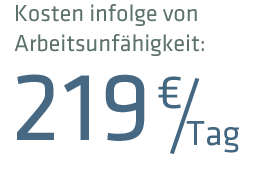
Ergonomics and health
The word “ergonomics” admittedly doesn’t sound very exciting. But it’s worthwhile to pay attention to it, because ergonomics and health are closely linked— and good health is what we most often wish for ourselves and others.
Poor health is a burden, and it’s expensive

At regular intervals, the Federal Institute for Occupational Safety and Health (BAuA) calculates the cost of sickness-related absenteeism to Germany’s national economy. In 2021, workers in Germany were on sick leave for an average of 17 days. As a result of the continued payment of wages and production downtime, German companies lost an average of €3,732 per employee per year.

Office workers in Germany spend about 80,000 hours of their lives sitting. As a result, many of their health problems are not the result of too much physical work but rather of not having enough exercise. Thus the keys to a healthy workplace are ergonomic seating and ample opportunities for movement.

The word 'ergonomics' comes from the Greek and consists of the words 'ergon', which can be translated as 'work', and 'nomos', which means 'law' or 'rule'. Today we define ergonomics as the science of adapting work equipment and working conditions to human beings.
Sick leaves

Musculoskeletal illnesses are the main cause of sickness-related absenteeism in Germany. They account for 23.0 % of all sick days, followed by an increasing number of mental health problems, which account for 17.7% of the total.
Source: Volkswirtschaftliche Kosten der Arbeitsunfähigkeit 2021, Ed.: BAuA

The World Health Organization (WHO) defines health as physical and mental well-being. Health maintenance requires workplace design that promotes health, compliance with the basic principles of ergonomics, the promotion of interpersonal relationships and avoidance of potential sources of psychic stress.

